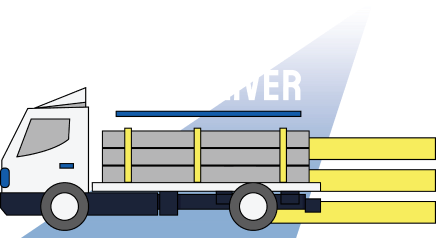In the construction industry, safety is always the top priority. One of the most critical aspects of safety is fall protection. Falls are the leading cause of fatalities in construction, and to prevent these tragic accidents, proper fall protection equipment and knowledge are essential. Whether you’re working at heights on scaffolding, ladders, or other elevated surfaces, ensuring you have the right safety measures in place can save lives and keep your projects running smoothly.

At House of Ladders, we understand the importance of fall protection. We provide a range of fall protection equipment, scaffolding, and ladders for sale and rental to construction companies across Florida, including Fort Lauderdale, Fort Myers, and Miami. In this article, we’ll break down the key fall protection requirements, ensuring you know what’s needed to stay compliant and, more importantly, safe.
What is Fall Protection?
Fall protection refers to any system, equipment, or procedures that are in place to prevent workers from falling or to minimize the severity of a fall. OSHA (Occupational Safety and Health Administration) mandates strict fall protection requirements in the construction industry. These regulations apply to anyone working at heights of six feet or more, which is common in most construction jobs.
Fall protection systems can include personal fall arrest systems (harnesses, lanyards, and anchor points), guardrails, safety nets, and more. It’s important to use the right system depending on the specific risks at the job site.
Key OSHA Fall Protection Requirements
OSHA standards ensure that workers are protected from falls in various work environments. Here are the primary requirements for fall protection in construction safety:
1. Height Thresholds
- General construction: Fall protection is required for workers at heights of six feet or more.
- Scaffolding: Fall protection is required when workers are on scaffolding more than 10 feet above a lower level.
- Ladders: When using ladders, the type of ladder and the working height determine what kind of fall protection, if any, is needed.
2. Guardrails and Safety Nets
- Guardrails are required on open-sided floors, platforms, and runways that are six feet or more above the ground or another level.
- Safety nets should be installed when work is performed more than 25 feet above the ground if other types of fall protection are not practical.
3. Personal Fall Arrest Systems (PFAS)
PFAS consists of a full-body harness, a lanyard or lifeline, and an anchor point. The system is designed to catch a worker in the event of a fall. For this to work effectively:
- The anchor point must be able to support at least 5,000 pounds.
- The harness should fit snugly, and the lanyard must have the correct length to prevent hitting lower levels or obstacles.
4. Training
OSHA requires employers to provide comprehensive fall protection training to all employees working at heights. Workers must understand how to properly use fall protection equipment, recognize fall hazards, and know how to report unsafe conditions.
Choosing the Right Fall Protection Equipment
With so many options available, it’s essential to choose the right fall protection equipment for your specific job. Here are a few types of equipment you may need:
- Harnesses and Lanyards: These are the core of any personal fall arrest system. It’s crucial to choose a harness that fits well and provides enough mobility for your work.
- Anchorage Connectors: Make sure the anchorage point is secure and strong enough to handle the force of a fall. Temporary anchor systems are available for shorter projects.
- Self-Retracting Lifelines (SRLs): These are ideal for work that requires constant movement at varying heights. SRLs automatically adjust the tension, preventing excess slack that could lead to a fall.
At House of Ladders, we carry a variety of fall protection equipment from leading manufacturers, ensuring you have the most reliable gear for your team. Whether you need to rent equipment for a specific project or purchase long-term solutions, we can help you select the right tools to meet OSHA standards and keep your job site safe.
Why Fall Protection Compliance Matters
Aside from the obvious fact that fall protection saves lives, complying with OSHA’s fall protection regulations can save your company from hefty fines. Non-compliance can result in severe penalties, project delays, and legal consequences. OSHA actively inspects construction sites, and fall protection violations are consistently among the top reasons for citations.
Investing in quality fall protection equipment and ensuring your team is properly trained will not only keep you compliant but also build a culture of safety within your company. Workers who feel secure are more productive, confident, and less likely to experience accidents, which reduces downtime and keeps projects on track.
Partner with House of Ladders for Your Fall Protection Needs
When it comes to fall protection, you need a trusted partner that understands the unique demands of the construction industry. At House of Ladders, we offer a wide range of fall protection solutions, from harnesses and guardrails to scaffolding and ladders that meet OSHA’s stringent requirements. Whether you’re working in Fort Lauderdale, Fort Myers, Miami, or anywhere else in Florida, we have the expertise and equipment to ensure your team stays safe.
We offer:
- Sales and rentals of fall protection equipment: Whether you need short-term rentals or are looking to purchase long-term solutions, we have you covered.
- Scaffolding and ladder solutions: Find the perfect scaffold or ladder setup for your specific project needs.
- Custom fabricated products: If your project requires something unique, we can provide custom fall protection equipment to suit your job site.
Your workers’ safety is our priority. Contact us today to learn more about our fall protection solutions and how we can help you create a safer work environment.

